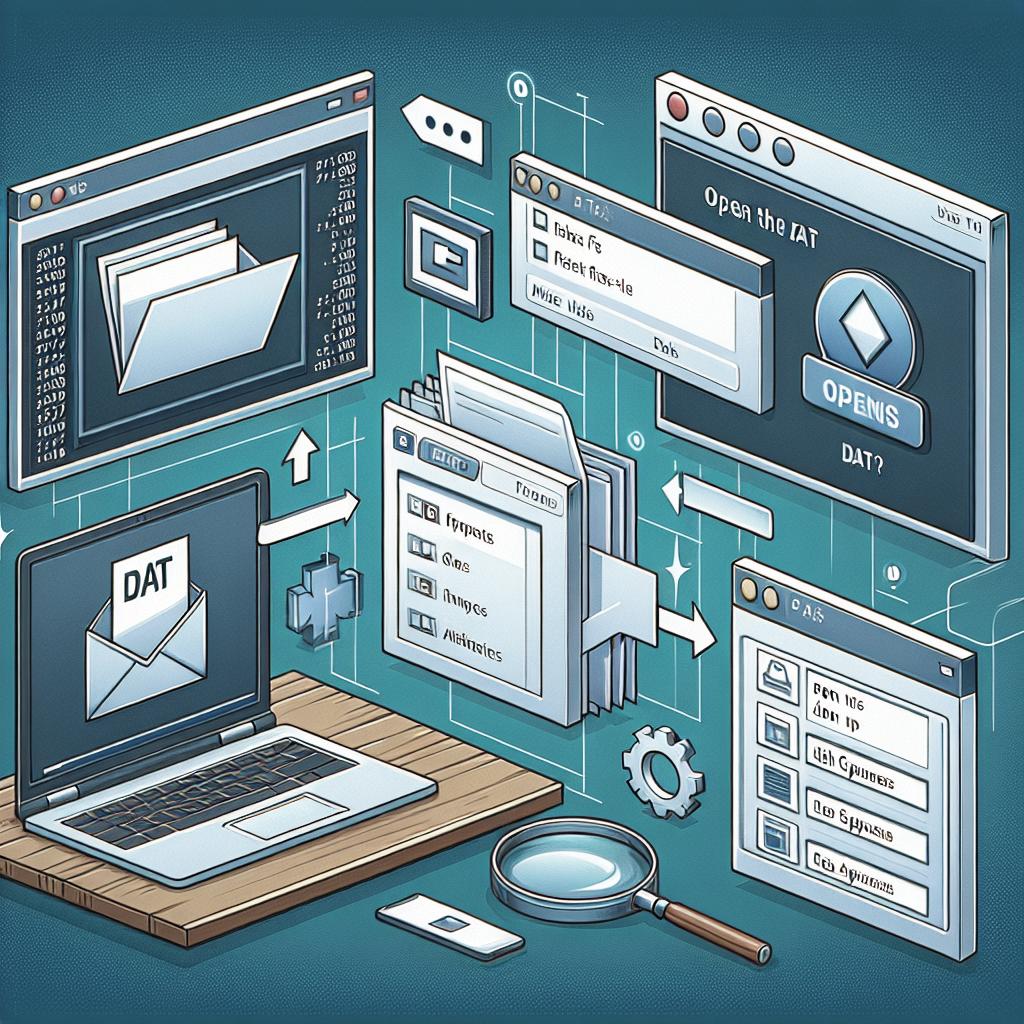How to Open the .dat File Format Extension
When encountering a .dat file, many users are often baffled by its mysterious nature. Unlike more familiar file
formats, the .dat file extension isn’t tied to a specific application and can contain anything from plain text
to complex binary data. This blog post aims to unravel the mysteries surrounding .dat files. We’ll explore the
different methods for opening these files, how to determine the best course of action when you’re unsure of
their contents, and when, and if, you should convert them into a more recognizable format. By gaining a better
understanding of these files, you’ll be equipped to handle them intelligently without risking system stability
or data integrity.
How do you open a DAT file when you don’t know what’s in it?
.dat files can be a bit of an enigma, primarily due to their versatility. To open a .dat file, you first need to
ascertain what kind of data or software it is associated with. Often, .dat files accompany games, email
attachments or serve as configuration files for programs. Start by attempting to open the file with a simple
text editor like Notepad or TextEdit. This method can be effective if the file contains plain text, allowing you
to decipher and decide on the next steps.
If the content appears to be binary or unreadable in a text editor, it’s helpful to check the source of the .dat
file. Knowing whether it originated from a specific application can provide clues about how to open it. If the
source is unknown, you can attempt to use file analysis tools that help identify the type of data a file
contains. Programs like File Viewer Plus or tools available online can scan and determine the most suitable
program to open the file. Always remember to remain vigilant about potential malware when dealing with unknown
files from unverified sources.
Should you Convert a DAT File?
Conversion is another option if you determine that the .dat file’s content would be more useful or accessible in
another format. Before converting, assess the initial file’s integrity. If the .dat file is part of a program
configuration or settings, altering its format might impact functionality. However, if it contains data like
video, audio, or text which needs to be utilized differently, conversion could be beneficial. Formats like .mp3
for audio or .pdf for documents can often make content more accessible.
To convert a .dat file, use software designed for such transformations. Freeware tools or online converters can
facilitate the process without requiring extensive technical knowledge. It is crucial, however, to choose
trusted software to ensure data security and to avoid corruption during conversion. As with opening .dat files,
stay cautious about unknown files, and always keep backups in case you need to revert to the original
format.
Summary of Main Points
| Understanding .dat Files | .dat files don’t have a dedicated program association and can contain varied data types. |
|---|---|
| Opening .dat Files |
Try text editors for readable content or use file analysis tools for binary data. Verify the source to choose the correct program. |
| Converting .dat Files | Consider conversion for utility, but verify file integrity and use secure, reliable conversion tools. |


